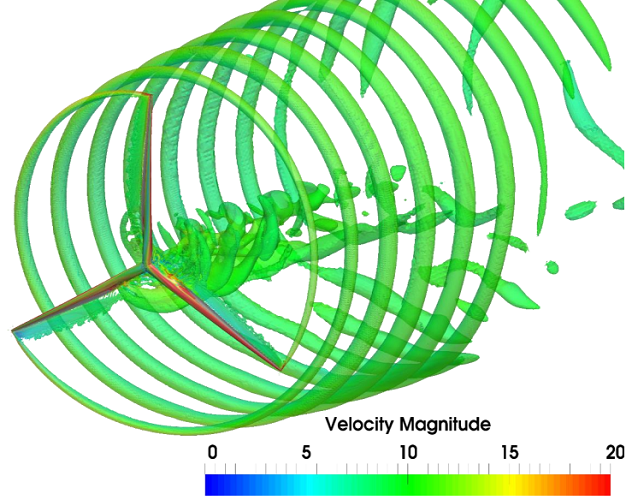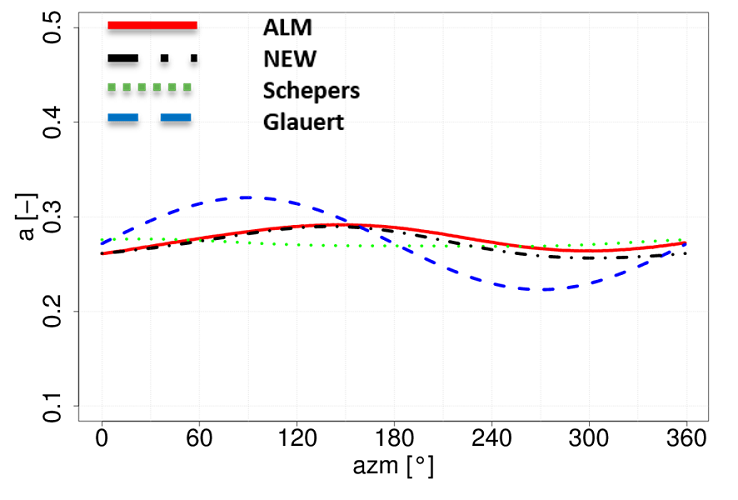The Blade Element Momentum (BEM) theory still forms the basis for many wind turbine design tools due to its computational efficiency. In BEM, the complex flow phenomena of effects which can occur during operation of wind turbines are included via so-called engineering or correction models. Nevertheless, recent studies have demonstrated that the design of modern large-scale wind turbines falls outside of the validated range of the BEM codes, particularly for stalled and yawed rotor conditions.
At Fraunhofer IWES, we are working on improvements of the BEM correction models using CFD-based methods (blade-resolved simulations or actuator line methods). This enables better prediction of loads on wind turbine components and energy production, which can lead to a lower cost of energy. To date, Fraunhofer IWES has worked intensively on improving skewed-wake models for yawed flow, dynamic stall, stall delay, and tip correction models. Recently, the framework for improving near wake engineering models in turbulent inflow has been extended.

